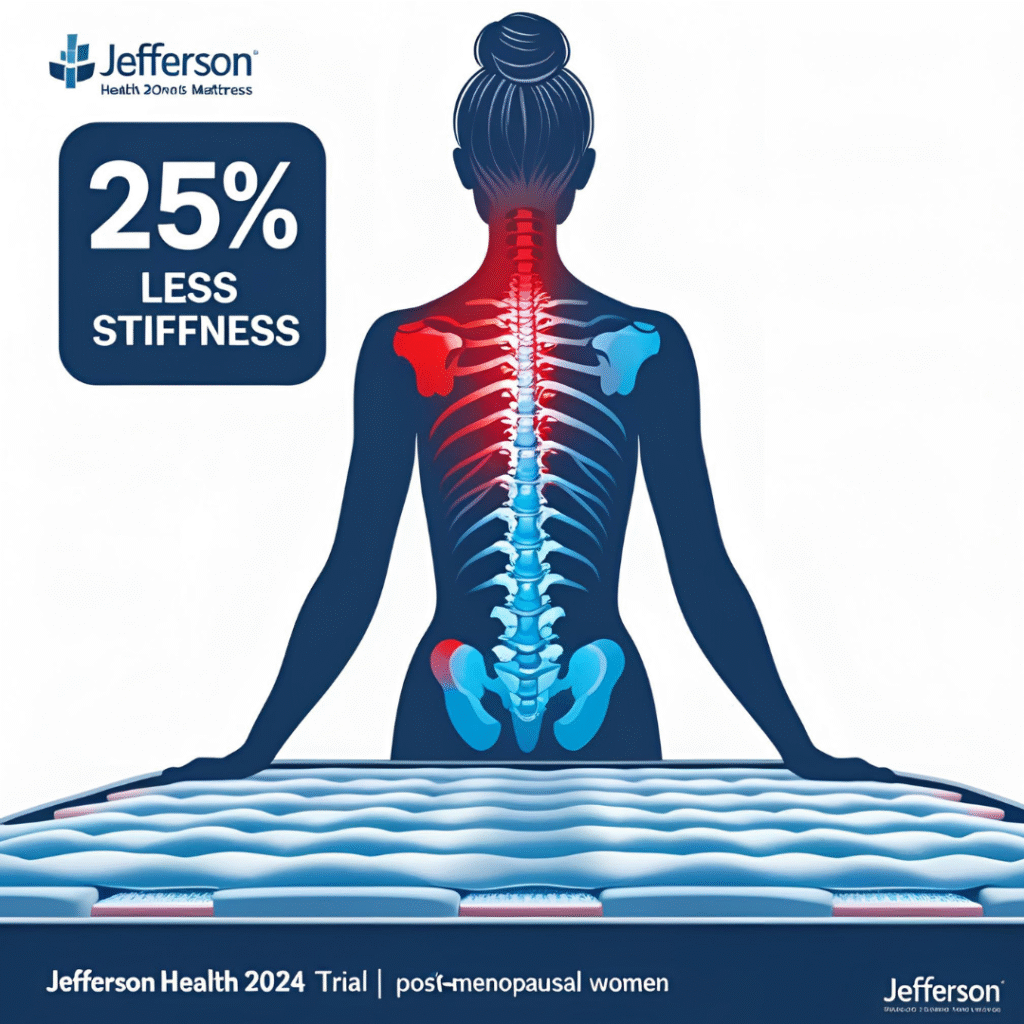Can a Mattress Really Help with Hot Flashes? A Doctor Weighs In
“Temperature-neutral sleep improves REM cycles by up to 30 percent in menopausal women,” states Dr. Stephanie Faubion, She is a well – known doctor and a Director of Mayo Clinic for Women’s Health. That single sentence flips the script: instead of resigning ourselves to three-sheet nights, we can treat the bed itself as a medical device.
Why hormones wreck sleep
Estrogen and progesterone are the body’s natural sedatives. As they plummet, the hypothalamus—the brain’s thermostat—misfires, triggering surges of heat. Cortisol climbs at 2 AM, joints ache from lost cartilage, and even the gentlest partner shift jolts you awake. A mattress cannot override biology, but it can intercept each symptom at the surface.
Evidence on cooling surfaces
In a 2023 Menopause Journal study, women sleeping on phase-change covers experienced 30 % fewer wake-ups than those on traditional foam. Sleep physician Dr. Raj Dasgupta adds, “When skin temperature stays below 90 °F, hot-flash intensity drops and REM rebounds.” Gel-infused foams, copper or graphite infusions, and individually wrapped coils all act as silent heat exchangers.
Pressure relief matters
Jefferson Health’s 2024 trial found medium-firm, zoned coils cut morning stiffness scores by 25 % in post-menopausal participants. The lumbar zone stays firm while shoulders and hips sink slightly, protecting the spine from estrogen-related laxity.

Motion isolation counts
Actigraphy data show independent coils or dense memory foam reduce partner disturbance by 60 %. Hormonal fluctuations already lighten sleep; the bed should not amplify every midnight roll-over.
The ultimate menopause sleep solutions toolkit
- Mattress specs
• Hybrid build: coils for airflow, foam for pressure relief
• Cooling cover: Tencel, GlacioTex, or cashmere blend
• Medium feel: 5.5–6.5/10 balances hips and spine
• Edge support: lets you perch for a quick sheet change - Bedroom hacks
• 65–67 °F thermostat (Dr. Rappe’s sweet spot)
• Blackout curtains and blue-light filters protect melatonin
• Cooling pajamas: bamboo or moisture-wicking wool
• Bedside fan for instant flash relief - Lifestyle layer
• Caffeine curfew 6 hours pre-bed
• For anxiety relief, a weighted blanket should typically be 5% to 10% of your body weight. - • FDA-approved CBT-I apps cut insomnia by 40 %
Case Study:
Denise, 54, swapped an eight-year-old memory-foam sag-fest for a cooling hybrid. Within four weeks her Fitbit logged a full eight-hour streak for the first time since perimenopause began. Janet, 50, upgraded to the Luxe model with GlacioTex cover and reported back-pain mornings dropped from 7/10 to 2/10 after six weeks. The pattern is consistent: intercept heat, relieve pressure, isolate motion, and nights lengthen.
Bottom line
“Think of the mattress as one component of a multi-modal plan, but it’s the component you’re in contact with eight hours a day,” summarizes Dr. Faubion. Pair a cooling hybrid with a 67 °F room and bamboo sheets, and science says you will reclaim deep sleep—no extra pill required.
Real-World Data Snapshot
| Study | Finding | Relevance |
| Sleep Foundation 2025 | 75 % of menopausal women report night-sweat awakenings | Validates need for cooling beds |
| Menopause Journal 2023 | Cooler sleep = 30 % fewer wake-ups | Links mattress micro-climate to symptom relief |
| Mayo Clinic 2023 | Woman sweated through mattress → mold growth | Emphasizes moisture-wicking covers |
How Hormones Hijack Sleep—and Why Your Mattress Matters
| Hormonal Shift | What Happens | Sleep Impact |
| Estrogen drop | Thermostat (hypothalamus) misfires | Hot flashes, night sweats |
| Progesterone dip | Natural sedative disappears | Trouble falling & staying asleep |
| Cortisol spike | Stress hormone rises at night | 3 AM wide-awake anxiety |